
Welcome to miamisnakes.com! I am David, a snake enthusiast living in Miami, FL. Many people don't know that Miami is in fact full of snakes! You just need to know where to find them - they can often be shy and elusive. Some Florida snake species are more common outside of the city limits, in different parts of Miami-Dade County FL, but many types of snakes are indeed common in the more urban parts of Miami. This guide is meant to help educate you about the beautiful snakes of Miami, and to help you identify the most common snakes of Miami, as well as the venomous snakes of Miami that you should learn to recognize and avoid. If you want more detail, click here for my complete list of ALL snake species in Miami. Remember the following:
- Most snakes of Miami are harmless and don't want to encounter you
- Venomous snakes exist but are uncommon in Miami, Florida
- Snakes eat rats and mice and are a valuable part of the Florida ecosystem
- Never kill a snake - if you leave a snake alone, it will leave you alone.
Common Snake Species in Miami
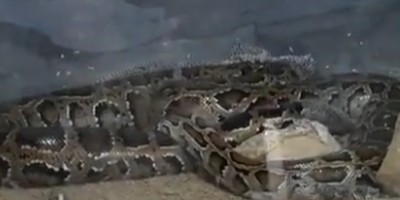 African Rock Python:
The African rock python (Python sebae) is a non-native, non-venomous type of snake in Florida. Its body is usually very long, growing up to 16 feet (5 m) and very stout. Its base color is usually a mix of tan, gray, and green, and its back has a fairly continuous line of blotches. They’re often found near prairies and lakes, but also in manmade canals, housing areas, and so on. Its diet consists mainly of small mammals. The African rock python can be intimidating because of its large size, but bear in mind it usually won’t attack unprovoked. While non-venomous, its bite can be extremely painful.
African Rock Python:
The African rock python (Python sebae) is a non-native, non-venomous type of snake in Florida. Its body is usually very long, growing up to 16 feet (5 m) and very stout. Its base color is usually a mix of tan, gray, and green, and its back has a fairly continuous line of blotches. They’re often found near prairies and lakes, but also in manmade canals, housing areas, and so on. Its diet consists mainly of small mammals. The African rock python can be intimidating because of its large size, but bear in mind it usually won’t attack unprovoked. While non-venomous, its bite can be extremely painful.
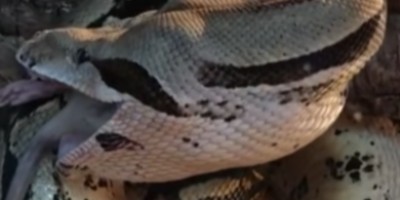 Boa Constrictor:
The boa constrictor is another very large, non-native, and non-venomous species of serpent found near the Miami region. It usually measures up to 16 feet (5 meters) in length and generally has a light tan background color, interrupted by dark, irregular blotches. It’s a versatile snake that will adapt to wet habitats, like swamps, but also dry areas, where it will mainly feed on rodents and opossums. Like the African rock python, it won’t bite unless provoked but has a very painful bite. It’s best to leave the boa in peace.
Boa Constrictor:
The boa constrictor is another very large, non-native, and non-venomous species of serpent found near the Miami region. It usually measures up to 16 feet (5 meters) in length and generally has a light tan background color, interrupted by dark, irregular blotches. It’s a versatile snake that will adapt to wet habitats, like swamps, but also dry areas, where it will mainly feed on rodents and opossums. Like the African rock python, it won’t bite unless provoked but has a very painful bite. It’s best to leave the boa in peace.
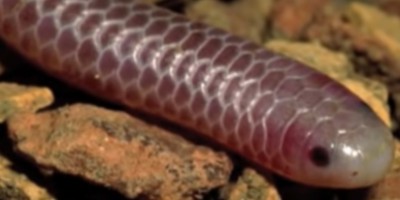 Brahminy Blind Snake:
The brahminy blind snake (Indotyphlops braminus) is a very small, non-venomous (and also non-native) species of snake that only grows up to about 6 inches (just over 15 cm). It’s small and thin and usually has a solid color on the body (mostly charcoal, dark gray, or sometimes, purple). They’re skilled burrowers and if cornered, will try to flee that way. They generally don’t bite. The brahminy blind snake can usually be found in loose soil and sawdust piles and its diet consists largely of eggs, ants, termites, and larvae. Its eyes are difficult to see due to poor development, hence the name.
Brahminy Blind Snake:
The brahminy blind snake (Indotyphlops braminus) is a very small, non-venomous (and also non-native) species of snake that only grows up to about 6 inches (just over 15 cm). It’s small and thin and usually has a solid color on the body (mostly charcoal, dark gray, or sometimes, purple). They’re skilled burrowers and if cornered, will try to flee that way. They generally don’t bite. The brahminy blind snake can usually be found in loose soil and sawdust piles and its diet consists largely of eggs, ants, termites, and larvae. Its eyes are difficult to see due to poor development, hence the name.
Venomous Snake Species in Miami
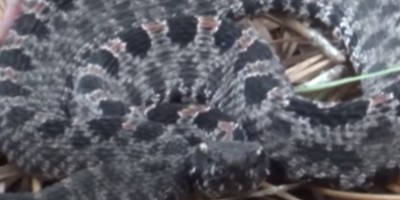 Dusky Pygmy Rattlesnake:
The dusky pygmy rattlesnake (Sistrurus miliarius barbouri) is a small venomous type of pit viper found in the Miami area. The adult typically only grows to 24 inches (around 60 cm), but despite the small length, has a fairly thick body. Its base color usually is a light or dark shade of gray, and its back is dotted with uneven, dark blotches, which disrupt the long, reddish line running down the middle. It usually prefers flatwoods, ponds, and prairies and feeds on lizards, small mammals, etc. The dusky pygmy rattlesnake’s venom isn’t strong enough to kill an adult human, and the rattler will generally flee rather than encourage confrontation.
Dusky Pygmy Rattlesnake:
The dusky pygmy rattlesnake (Sistrurus miliarius barbouri) is a small venomous type of pit viper found in the Miami area. The adult typically only grows to 24 inches (around 60 cm), but despite the small length, has a fairly thick body. Its base color usually is a light or dark shade of gray, and its back is dotted with uneven, dark blotches, which disrupt the long, reddish line running down the middle. It usually prefers flatwoods, ponds, and prairies and feeds on lizards, small mammals, etc. The dusky pygmy rattlesnake’s venom isn’t strong enough to kill an adult human, and the rattler will generally flee rather than encourage confrontation.
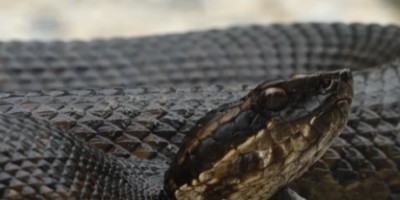 Florida Cottonmouth:
The Florida cottonmouth (Agkistrodon conanti) is a long, heavy-bodied venomous serpent. It usually grows up to 48-50 inches (122 cm), and has a light tan base color, with dark brown crossbands. It’s coloring usually darkens with age. It’ll usually be found near water sources (e.g. lakes, ponds, streams), and likes to feed on related creatures, such as fish, frogs, or salamanders. While the cottonmouth is not aggressive, its venom can be extremely potent.
Florida Cottonmouth:
The Florida cottonmouth (Agkistrodon conanti) is a long, heavy-bodied venomous serpent. It usually grows up to 48-50 inches (122 cm), and has a light tan base color, with dark brown crossbands. It’s coloring usually darkens with age. It’ll usually be found near water sources (e.g. lakes, ponds, streams), and likes to feed on related creatures, such as fish, frogs, or salamanders. While the cottonmouth is not aggressive, its venom can be extremely potent.
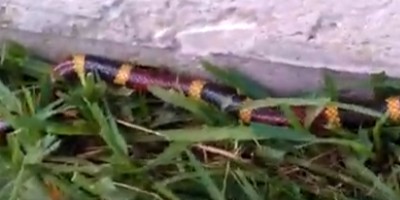 Harlequin Coral Snake:
The Harlequin coral snake (Micrurus fulvius) is a small, slender venomous snake with an interesting color pattern. It measures roughly 25 inches (76 cm) in length, and has alternating red and black cylinders, occasionally separated by bright yellow circles. Its small head is delimited by a thick yellow band. It’s a versatile type of snake, adapting well both to dry and wet habitats. It mainly feeds on lizards and smaller snakes. The Harlequin coral snake is a very non-aggressive serpent, and all bites occur after it is intentionally harmed or manhandled. Its venom is extremely dangerous.
Harlequin Coral Snake:
The Harlequin coral snake (Micrurus fulvius) is a small, slender venomous snake with an interesting color pattern. It measures roughly 25 inches (76 cm) in length, and has alternating red and black cylinders, occasionally separated by bright yellow circles. Its small head is delimited by a thick yellow band. It’s a versatile type of snake, adapting well both to dry and wet habitats. It mainly feeds on lizards and smaller snakes. The Harlequin coral snake is a very non-aggressive serpent, and all bites occur after it is intentionally harmed or manhandled. Its venom is extremely dangerous.
If you're unsure, you can email me a photo of the snake at info@miamisnakes.com and I will email you back with the snake's species. If you found a snake skin, read my Found a Skin? page, and you can email me a photo of the skin, and I'll identify the snake for you. If you need professional Miami snake removal help, click my Get Help page, or see the below website sponsor I found, who provides that service.
Remember, the term is not poisonous snakes of Miami, it's venomous snakes of Miami. Poison is generally something you eat, and venom is injected into you. That said, dangerous snakes are very rare in Miami. The few venomous snakes of Miami-Dade County are rarely seen. But they are commonly misidentified, so learn about all the snake species of Miami in order to correctly identify them. These snakes are usually also found in the surrounding towns of Hialeah, Miami Beach, Homestead, Kendall, Doral, Coral Gables, Miami Gardens, Cutler Bay, North Miami, Aventura, Miami Lakes, North Miami Beach, South Miami, Pinecrest, Florida City, Sunny Isles Beach, Opa-locka, Key Biscayne, Palmetto Bay, Miami Shores, Miami Springs, Sweetwater, Hialeah Gardens, Bal Harbour, West Miami, Bay Harbor Islands, Surfside, North Bay Village, Medley, Biscayne Park, El Portal, Golden Beach, Fisher Island, Westchester and the surrounding areas.
Read our article about:
Burmese Pythons Threatens the Ecosystem of South Florida
miamisnakes.com domain and hosting costs made possible by the generous support of this sponsor:
